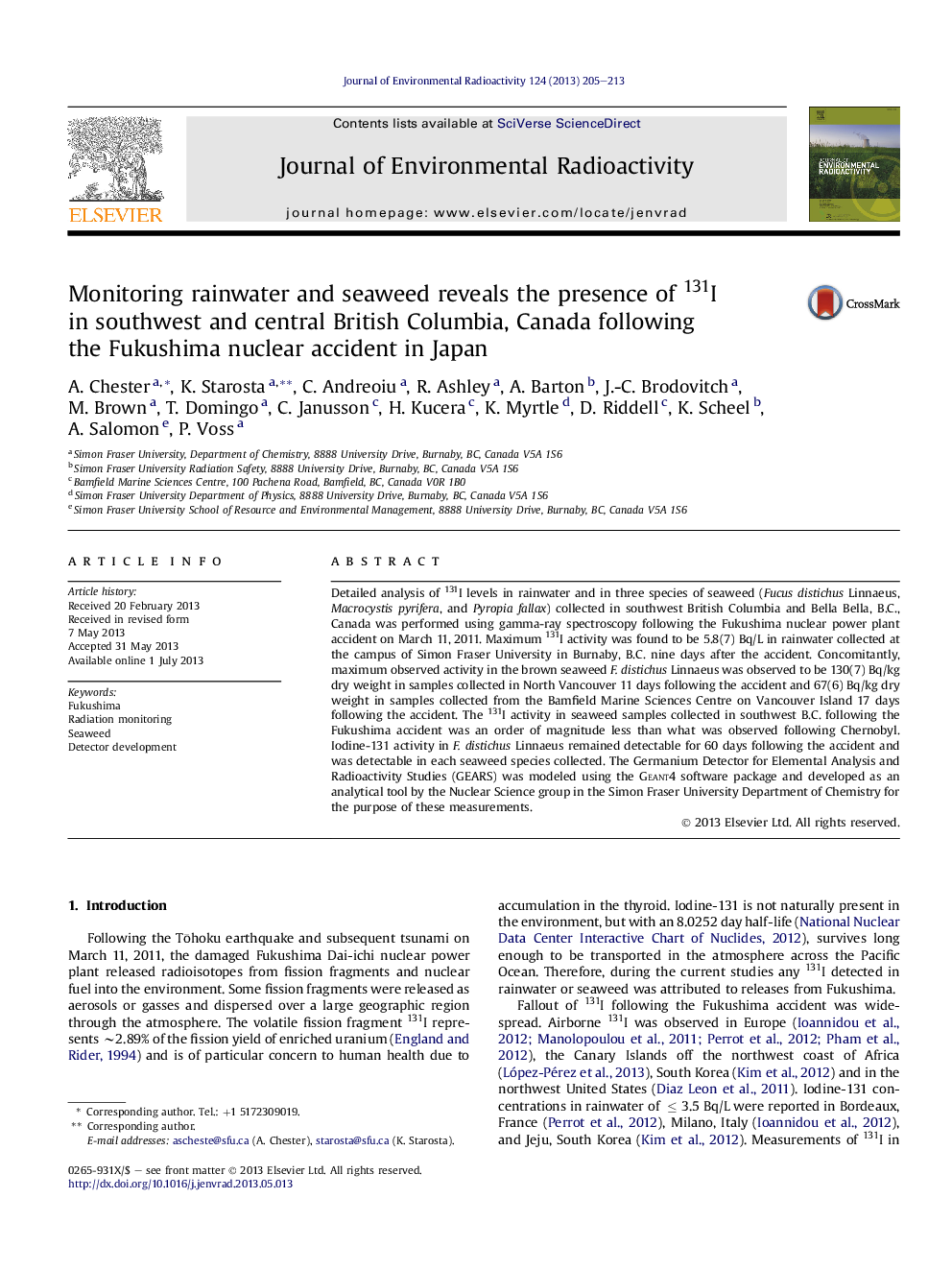| کد مقاله | کد نشریه | سال انتشار | مقاله انگلیسی | نسخه تمام متن |
|---|---|---|---|---|
| 1738191 | 1521609 | 2013 | 9 صفحه PDF | دانلود رایگان |

• 131I fallout was monitored in British Columbia following the Fukushima accident.
• Fallout was measured in rainwater and three seaweed species.
• Local 131I content was an order of magnitude lower than that following Chernobyl.
• A shielded HPGe detector was developed as an analytical instrument.
• The experimental setup was modeled in the Geant4 simulation toolkit.
Detailed analysis of 131I levels in rainwater and in three species of seaweed (Fucus distichus Linnaeus, Macrocystis pyrifera, and Pyropia fallax) collected in southwest British Columbia and Bella Bella, B.C., Canada was performed using gamma-ray spectroscopy following the Fukushima nuclear power plant accident on March 11, 2011. Maximum 131I activity was found to be 5.8(7) Bq/L in rainwater collected at the campus of Simon Fraser University in Burnaby, B.C. nine days after the accident. Concomitantly, maximum observed activity in the brown seaweed F. distichus Linnaeus was observed to be 130(7) Bq/kg dry weight in samples collected in North Vancouver 11 days following the accident and 67(6) Bq/kg dry weight in samples collected from the Bamfield Marine Sciences Centre on Vancouver Island 17 days following the accident. The 131I activity in seaweed samples collected in southwest B.C. following the Fukushima accident was an order of magnitude less than what was observed following Chernobyl. Iodine-131 activity in F. distichus Linnaeus remained detectable for 60 days following the accident and was detectable in each seaweed species collected. The Germanium Detector for Elemental Analysis and Radioactivity Studies (GEARS) was modeled using the Geant4 software package and developed as an analytical tool by the Nuclear Science group in the Simon Fraser University Department of Chemistry for the purpose of these measurements.
Journal: Journal of Environmental Radioactivity - Volume 124, October 2013, Pages 205–213